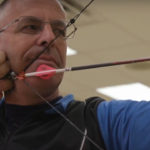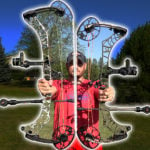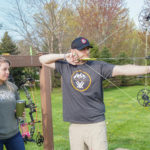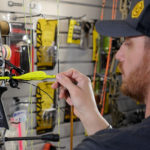Getting a compound bow set to the correct draw length is arguably one of the most critical, yet overlooked, aspects of a bow setup.
A draw length that is either too short or too long for an individual bowhunter can lead to a flurry of problems related to shooting form, accuracy and even physical injury.
But how many bowhunters have actually spent time figuring out what draw length is correct for them?
Often times, a bowhunter will base his draw length information off a buddy’s bow. The two are about the same size and so the one without the bow will draw back his friend’s and say, “Yep, this feels good.”
That could be the correct draw length. It also could be off by a good bit.
Let’s start by measuring your draw length.
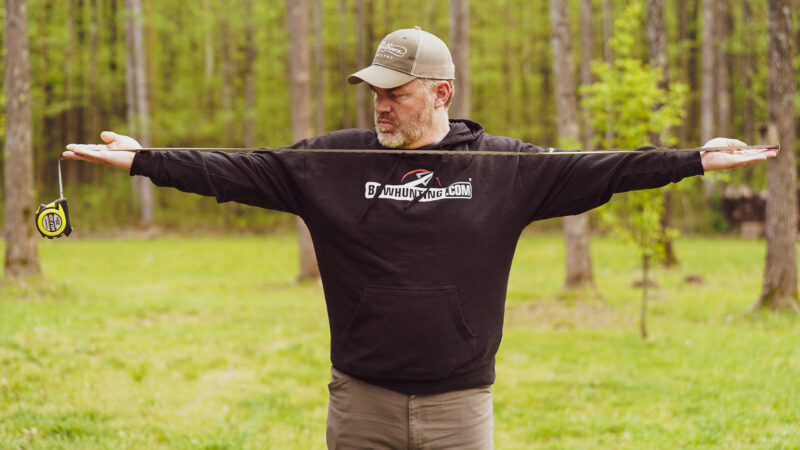
There are two easy methods that you can do at home by yourself or with a friend helping.
The first involves you standing with your arms spread straight out to either side of your body at shoulder height. You’re basically forming the letter “T” with your body.
Now measure the distance from the tip of one middle finger to the tip of your other middle finger. Now take that measurement and divide by 2.5 to get your draw length.
My own measurements under that formula are 73 inches total, with a draw length of 29.2 inches.
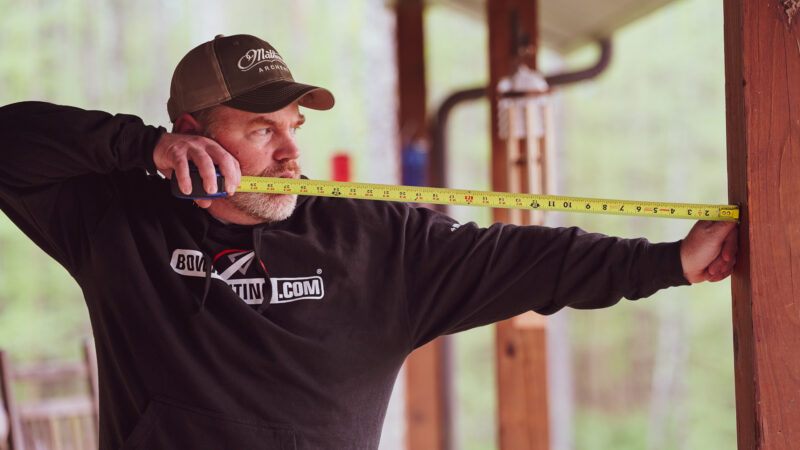
A second method is to stand in that same T stance, but make a fist with your bow hand and move so that fist is touching a wall. Turn your head toward that hand and measure from the wall to the corner of your mouth where you would anchor a kisser button.
The key with this method is to make sure you don’t lean your head toward your bow hand. It should be straight over the center of your body.
For me, that measurement is 29.5 inches.
So we’re all done right? My draw length is about 29.5 inches.
Not quite. Consider this your starting point. Now it’s up to you to play with different draw lengths shorter and longer than your measured draw length to see what feels comfortable; what gives you the shooting clearance you need from your body; and what allows you to hold the steadiest.
We’re not talking about any huge additions in length here. From your measured draw length, adding or subtracting 1 inch would likely be the maximum. And you’re more likely to add than to subtract from the measured length.
This testing takes time. Don’t just take one shot at a new draw length and make a determination based on that shot. Spend some time shooting at different lengths before deciding.
I actually use two draw lengths. My hunting bows are set to 29.5 inches, while my target bows are set to 30 inches. The difference is because, while bowhunting, I expect to wear heavy, bulky clothing. The 30-inch draw is best for me to hold a bow steady, but it also stretches out my arms and chest quite a bit, and I get string contact when I wear heavy clothes. Cutting a half inch gives me the clearance I need for bowhunting clothes.
Something else you can do is schedule a lesson with a certified archery coach. The coach can watch you shoot and check to see if your draw length is right or not.
If you don’t play with different draw lengths, it’s tough to know for sure what length is best for you. But how many bowhunters had their draw lengths set years ago and they’ve never changed?

 By
By 